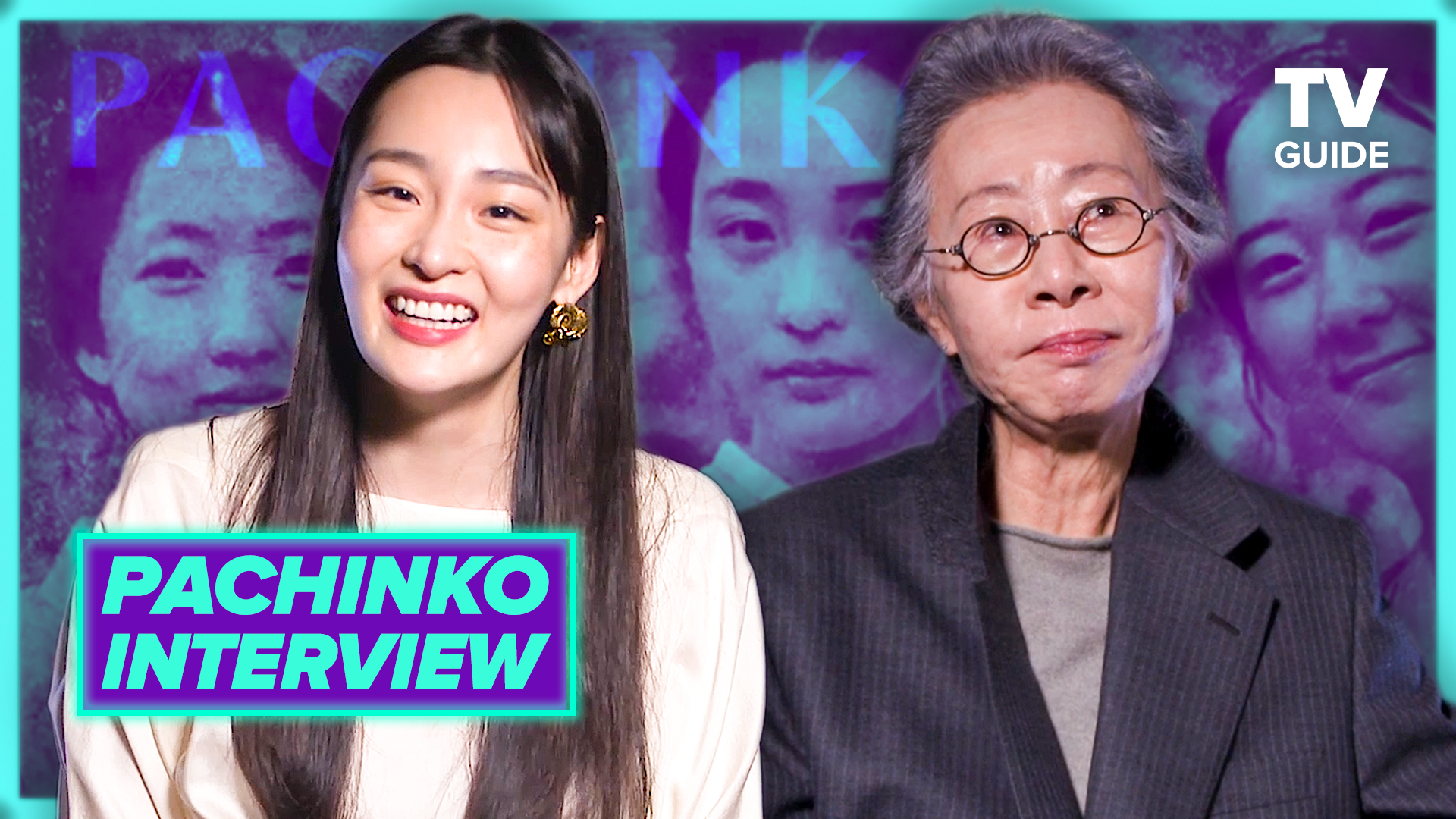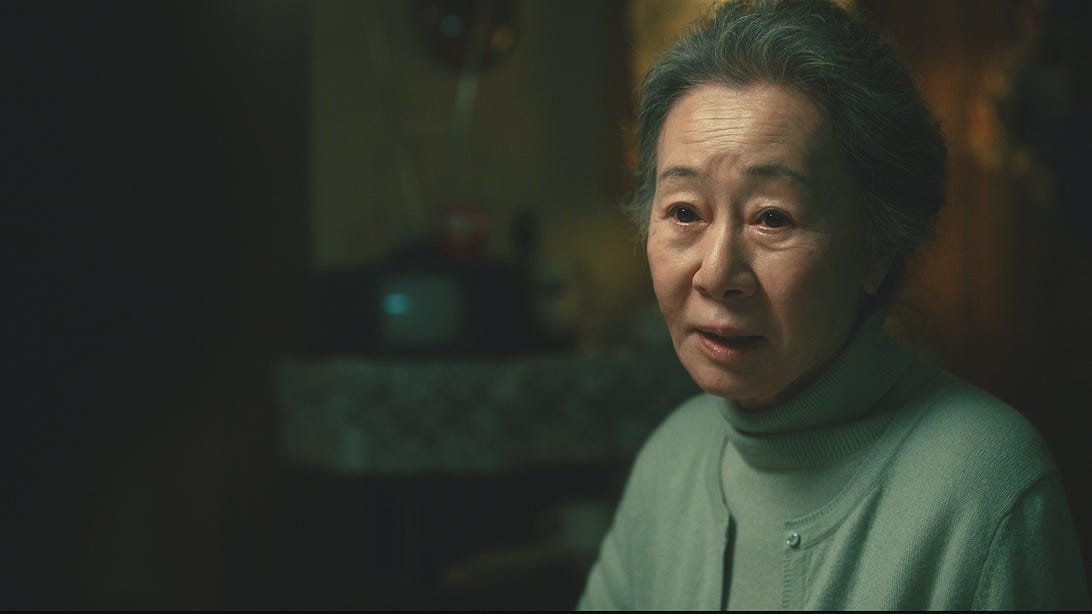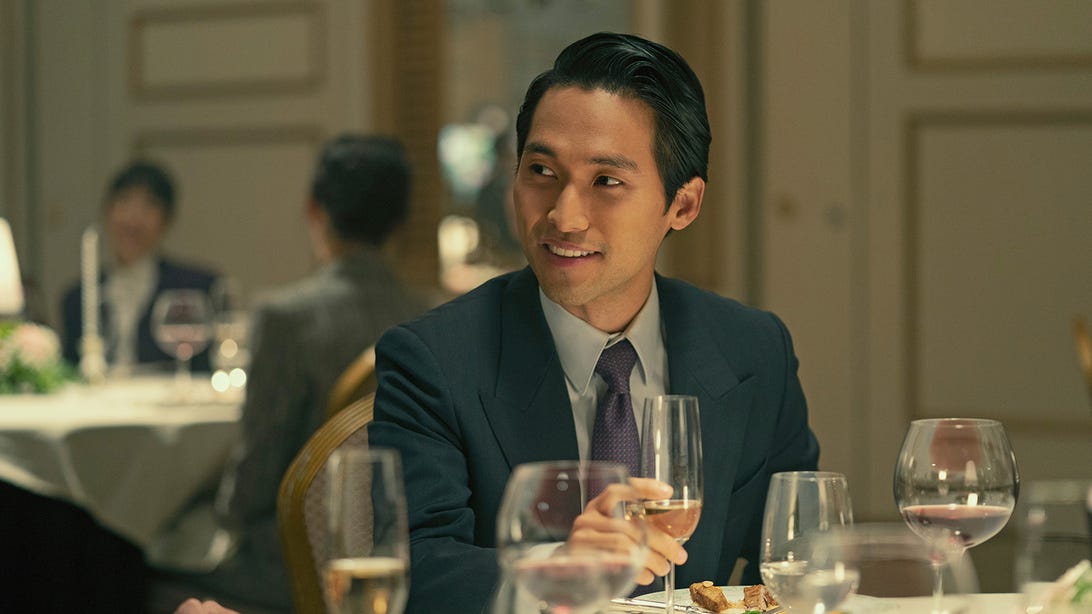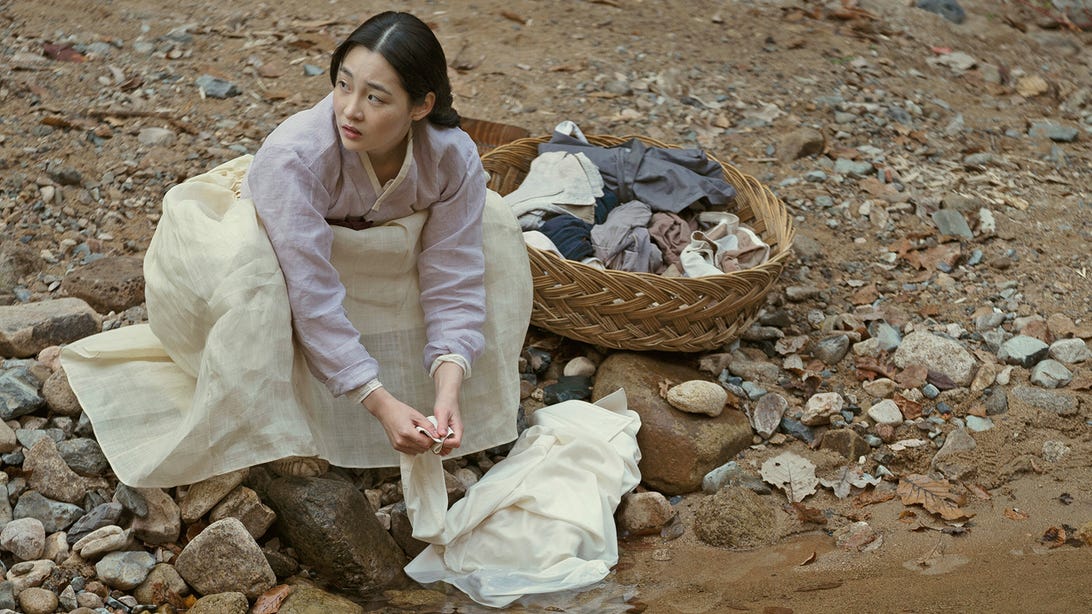Join or Sign In
Sign in to customize your TV listings
By joining TV Guide, you agree to our Terms of Use and acknowledge the data practices in our Privacy Policy.
Pachinko Pushes TV Toward a More Connected Future
The show's cast and producers reveal how the show transcends geographical, language, and generational borders
The pan sizzles as the grandmother prepares ingredients for pajeon, a Korean green onion pancake. Her grandson, who has just arrived in Osaka from New York on business, lifts the lid off a pot as steam permeates the kitchen. "You have to eat. Look at yourself in the mirror. All skins and bones!" Sunja chides Solomon in Korean. Moments later, a middle-aged woman in a silky dress with perfectly coiffed hair scurries into the room. "Etsuko-san!" Solomon exclaims, and speaks in Japanese with his father's girlfriend. It's one of a slew of scenes from Pachinko's first episode that immediately reflects the show's multilingual storytelling. Throughout the Apple TV+ series, characters converse in Korean, Japanese, and English. And while this scene takes place in 1989 Osaka, the story is just as much about a different time period in a different location: 1915 Yeongdo, an island in Korea — and all the years in between. Pachinko spans countries, languages, and generations, immersing viewers in a sweeping epic about one Korean family.
Created by Soo Hugh and based on Min Jin Lee's The New York Times bestselling novel of the same name (the author told The New Yorker in February that she was no longer an executive producer on the show), Pachinko follows Sunja, a girl born in Korea a few years after Japan colonized the country. Seven-year-old star Yuna plays Sunja in her childhood, while Minha Kim portrays the character in her teens. Kim's version of Sunja falls in love with the wealthy fish broker Koh Hansu (Lee Minho). Soon after, she must decide between staying in her homeland with dire consequences and uprooting her life to start anew in a foreign country. In the 1980s timeline, Yuh-Jung Youn stars as 74-year-old Sunja, who lives with her son Mozasu (Soji Arai) in Osaka. They reunite with Sunja's grandson Solomon (Jin Ha), who works as a bank executive in New York but travels to Japan with the goal of closing a lucrative deal for his company and securing a promotion.
"I think the show breaks incredible barriers. Just the fact that it's the first of its kind or it speaks English, Japanese, and Korean," Justin Chon, who directed four episodes of the series — the other four were directed by Kogonada — told TV Guide. "This is truly an original, it's a worldwide show." And as a show that takes place over the majority of the 20th century, Pachinko encourages dialogue not just across continents but between generations.

'We're all much more alike than different'
Pachinko, produced by Media Res and Blue Marble Pictures, unfolds across three countries. According to Apple TV+, filming took place across seven cities in South Korea, as well as in Japan and Canada — where production created a set to resemble '80s New York. The diverse 300-person crew included individuals from South Korea to Italy. "After the very first week of filming, the energy on set shifted dramatically," Hugh said in press notes provided by Apple TV+. "You'd see people having lunch together. They didn't speak the same language but were communicating with hand gestures. And, by the end of the shoot, they're all bragging about how much Korean or Japanese or English they learned."
The spirit of community was evident. "I think we're meant to love one another. And this show proved me right," she added. While much of the story revolves around historical events in specific locations, the cast and crew hope that viewers who do not share the same heritage can relate to it through elements that are universal.
"One of my goals of mine in storytelling is to show how we're all much more alike than different," Chon told TV Guide. "I think the show definitely does that."
Asked whether there are different takeaways she hopes Korean viewers and non-Korean viewers will have from the show, star Yuh-Jung Youn said she hopes audiences are "not focusing [on] the relationship between Japan and Korea." Instead, she hopes they will "connect with a human character and human feelings and human emotions of this time and their love."
It's an attachment that the Academy Award winner experienced when reading the Pachinko script for the first time. "I felt an immediate connection to Sunja," Youn said. The actor also read the book and was inspired by Sunja's resilience and will to survive. "She went to Japan as an immigrant, without speaking [the] language," Youn said. "I remembered my time when I came [to the United States] in 1974 without speaking any English." Youn lived in Indiana and Florida for a decade before moving back to Korea. Though the time and location are different, her memories of that period surfaced as she read Sunja's story. "I felt like I had to play this role," she said.

Yuh-Jung Youn, Pachinko
Apple TV+Minha Kim, whose electrifying performance as young Sunja marks only her second professional acting role, shared the sentiment. "It is more focused on humanity, and about the personal changes throughout a lot of events that she's suffering from," Kim said of Sunja. "I want people to follow her mind and how she feels."
Like Youn, Kim said she felt an instant connection to Sunja, whom she describes as strong, smart, and flexible. "While I was reading the novel I learned so many things from her. And then I got to know about myself too," Kim said. She related to Sunja's strength. "Even though we had all these obstacles … Sunja and I always survive," Kim said.
Honoring through languages
Just as important to the cast and crew as creating authentic sets across multiple countries was tackling the languages with accuracy. In its dialogue, Pachinko brings something entirely new to the television landscape for English-speaking Western audiences. "It's not even that I hope to break barriers [with the series]. It is already," actor Jin Ha said. "I've never known of a show produced by an American production company…that is this much in foreign languages." While subtitled content is becoming more familiar to American viewers — in no small part due to the booming popularity of series produced outside of the U.S. like Squid Game and Money Heist — Pachinko stands out for how it employs not one but two languages in addition to English. Sometimes, entire scenes are delivered fully in Korean or Japanese. Other times, yellow subtitles denoting Korean and cyan subtitles denoting Japanese appear simultaneously. There are also lines where Korean words and Japanese words are used in the same sentence.
"The fact that we were able to honor the actual languages of the people that we're trying to represent and honor in the show, that to me was so important," Ha said. His character speaks all three languages in the show. And while Ha is fluent in English and Korean, he had to learn Japanese. "As viewers, no matter how talented or skillful an actor might be, I feel like we have this sixth sense in whatever language we're fluent in to hear if something feels a little bit off," Ha said, adding that he knew this reality when he entered the project. "That being said, with my coach Yumi, it was sort of shoot for the moon and land in the stars. It was us always trying to be better," he recalled.

Jin Ha, Pachinko
Apple TV+Ha fully embraced his studies. "In spite of how difficult the challenge was to learn and perform in all those languages, it was the easiest for me to feel motivation to do well in it because it's uplifting and putting in the spotlight a group of peoples that I don't know have ever been represented to this extent in America before," he said.
In the series, Solomon splits his time between Tokyo, where he works, and Osaka, where his father operates a pachinko parlor — an arcade where the Japanese pinball game is played. Ha learned both the Tokyo dialect and the Kansai dialect used in Osaka for his performance. "When is it appropriate for me to speak in Kansai versus Tokyo? That's the most obvious representation of the code-switching that Solomon has to do," Ha explained. Just like in the rest of Pachinko, language is as much a form of communication as it is a window into each character's history.
Connecting with past and future generations
As the family's story plays out in multiple timelines, one conversation Hugh hopes to start with Pachinko is about the sacrifices of past generations. "For immigrant children like me in America," she said, "especially when you go after the American Dream, so much of it you forget that there's a reason why your parents pushed you. There's a reason why your parents left their homeland." It's partly why the series centers Solomon in the 1980s timeline, though his role is more secondary in the book. "I thought it was such a great opportunity in Solomon's character to talk about our present-day generation," Hugh said. Especially for individuals from immigrant families who have lived between worlds, the way that Solomon code-switches is familiar.
Kim said she came to understand her character more deeply by speaking to someone from another generation. "My grandmother is 94 years old right now, so she actually lived in that era," Kim said. "Every time I had a conversation with her, I got to know Sunja more."
Hearing first-hand experiences from her grandmother helped Kim understand the significance behind little details in the series. "To me, it was kind of hard for me to know the precious[ness] of the white rice at that time by just reading the novel," she said. "But my grandmother told me that at that time, it [was] really, really difficult for people to get the white rice."

Minha Kim, Pachinko
Apple TV+Chon said the show has made him think about the generations that come both before and after. "One of the reasons I took the show was because it reminded me so much about my grandmother on my dad's side," he said. "She was alive during this time in the early 1900s, and she told me stories about this time." At the same time, Chon relates to the messages of the show as a father. "I have a daughter and I hope that she can consider the choices that I make and how they're all for her," he said. "And I hope that through the generations, audiences can consider maybe the choices they've made and also the choices that are made for them, in benefit for them — for better or worse."
A future of television that's less divided
Hugh said that Pachinko is meant to be ongoing, though Apple TV+ has yet to announce more seasons. "We'll wait and see, but we're just so proud of what we did with Season 1," she said. "And hopefully, it'll be the start of something." Even in the eight episodes of this first installment, the show has more than pushed the bounds of storytelling from American production through its transcontinental setting with a diverse cast and crew, trilingual delivery, and intergenerational narrative.
"We're in a very strange but exciting period in television right now, where we still talk about shows as international shows or local-language shows or domestic shows," Hugh said. "I want that to go away. I hope one day we can talk about shows, period." She hopes that there will be one market for television, and that market is the world. "These barriers constantly separate us, and I think the stories that we want to tell are universal, are bigger, even if they're specific," Hugh said. "As long as you make someone feel something, that should be the only designation."
The first three episodes of Pachinko are available to stream on March 25, followed by weekly releases.

